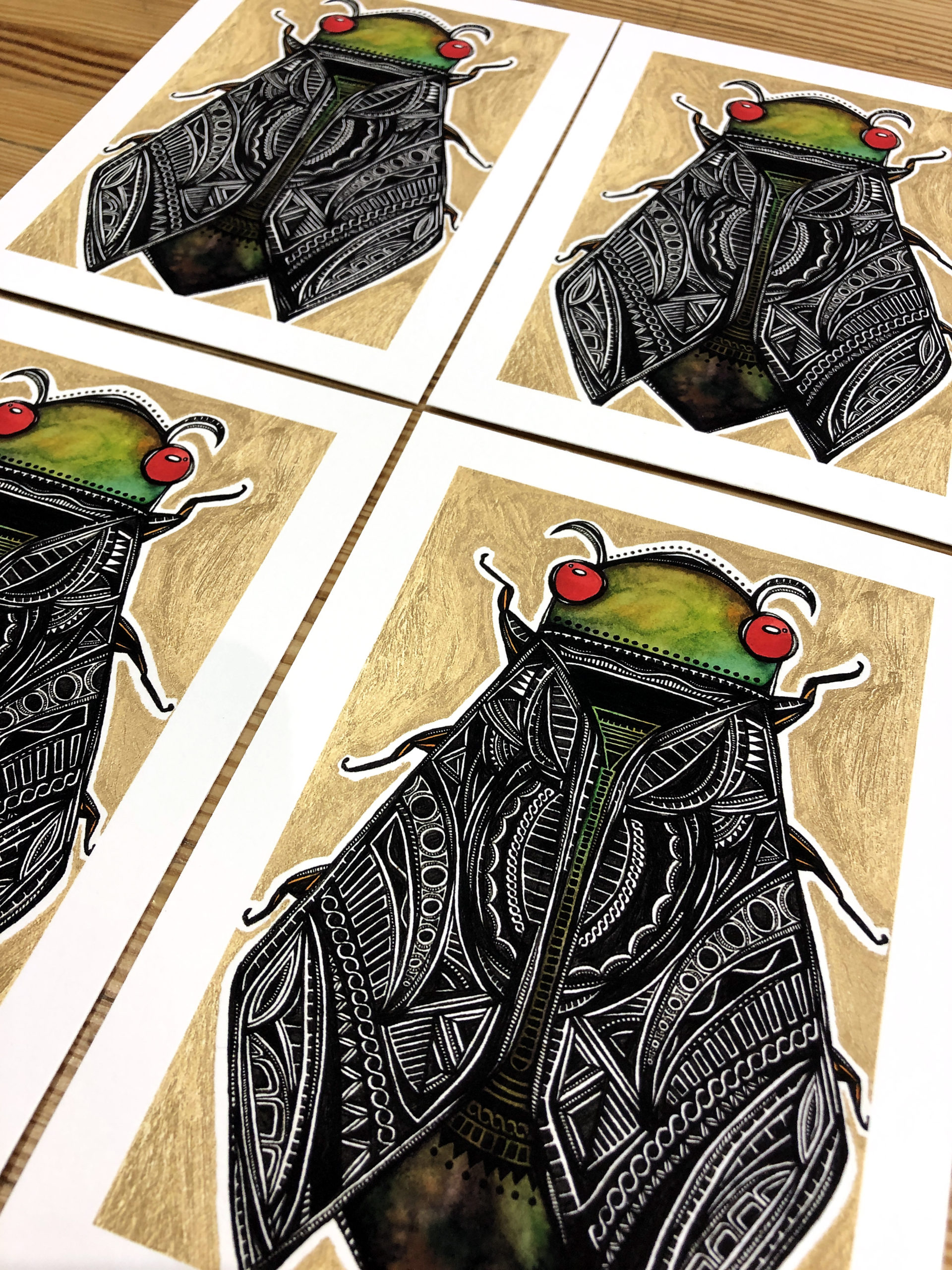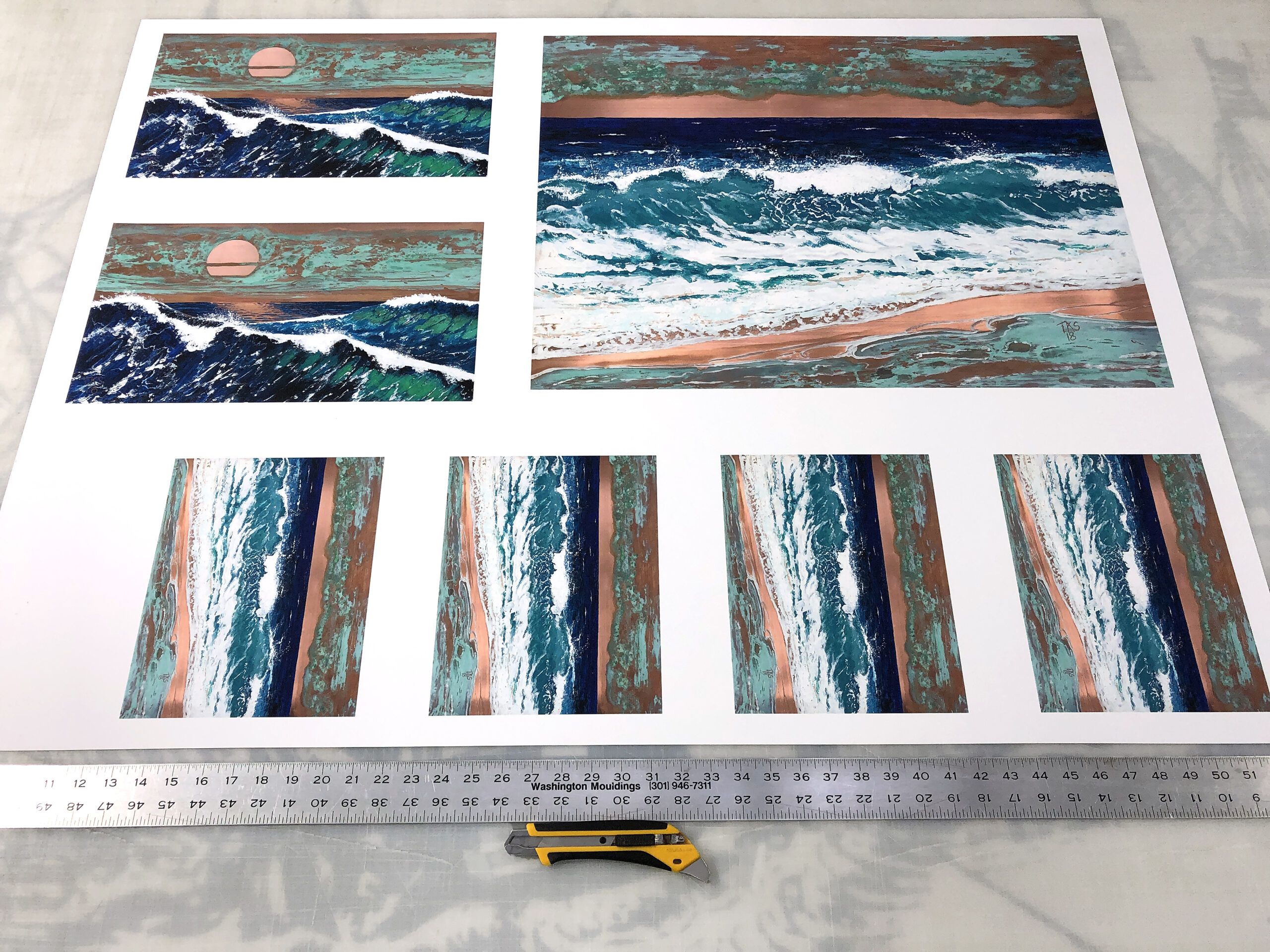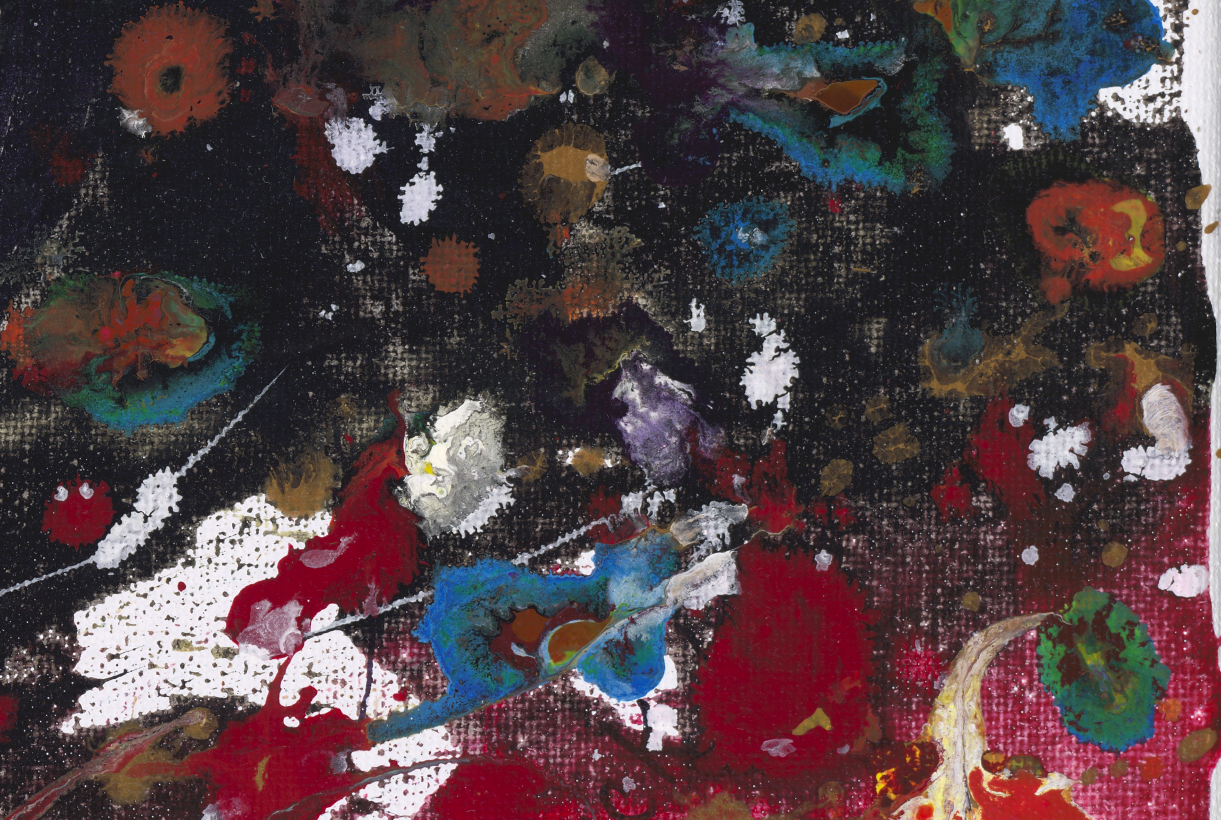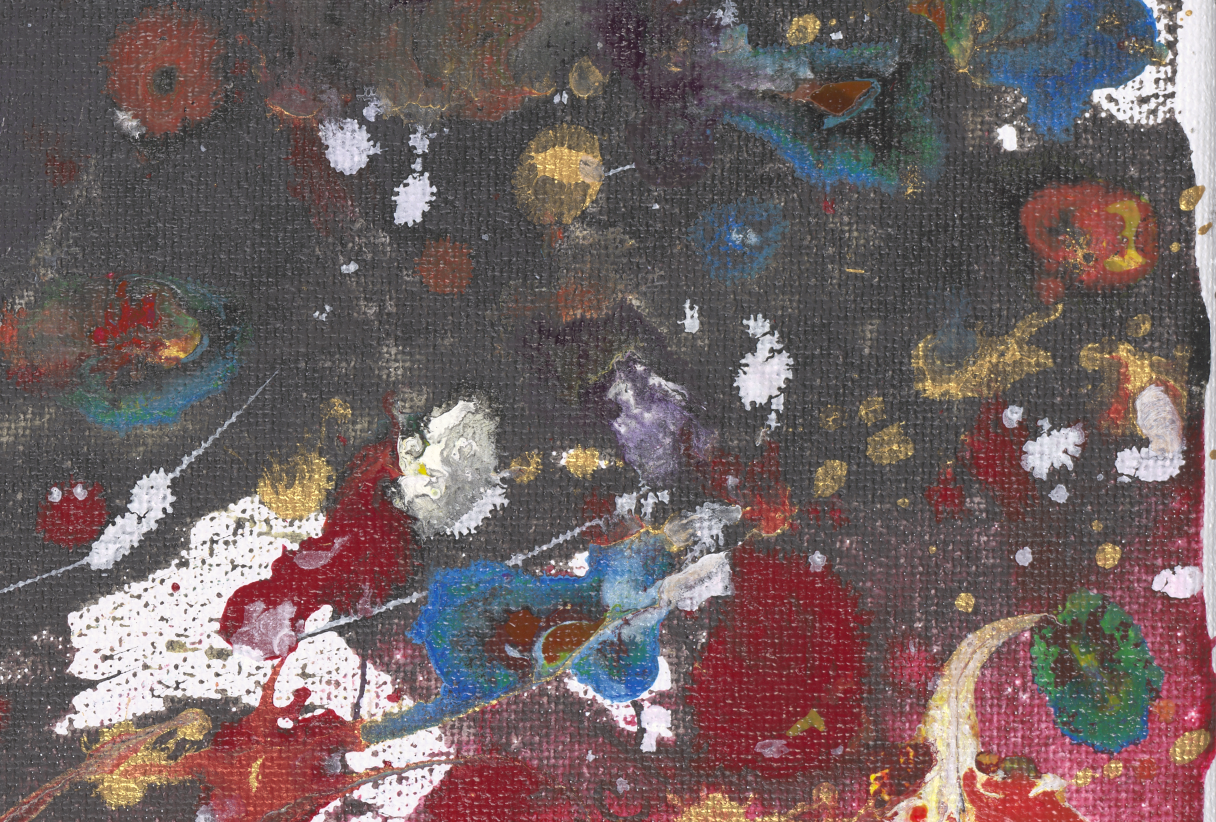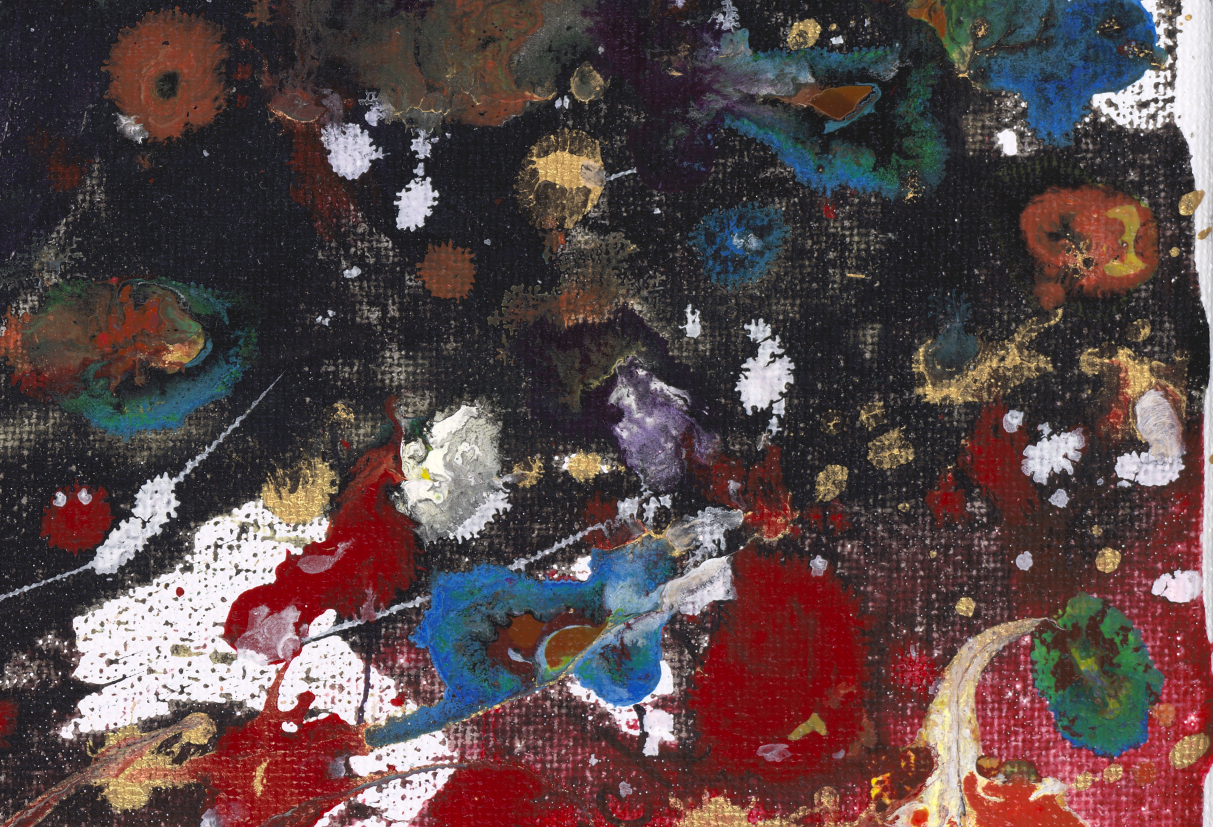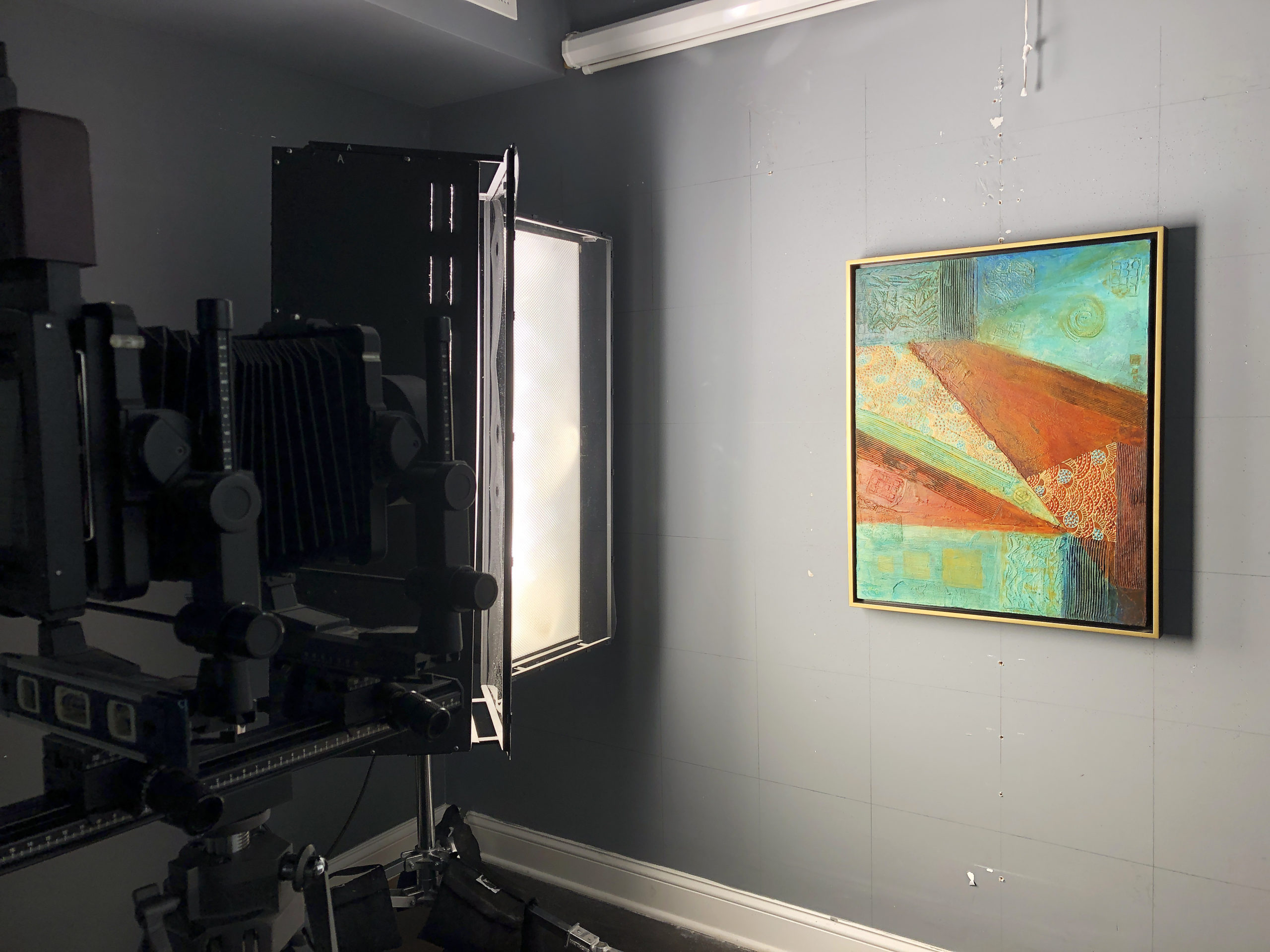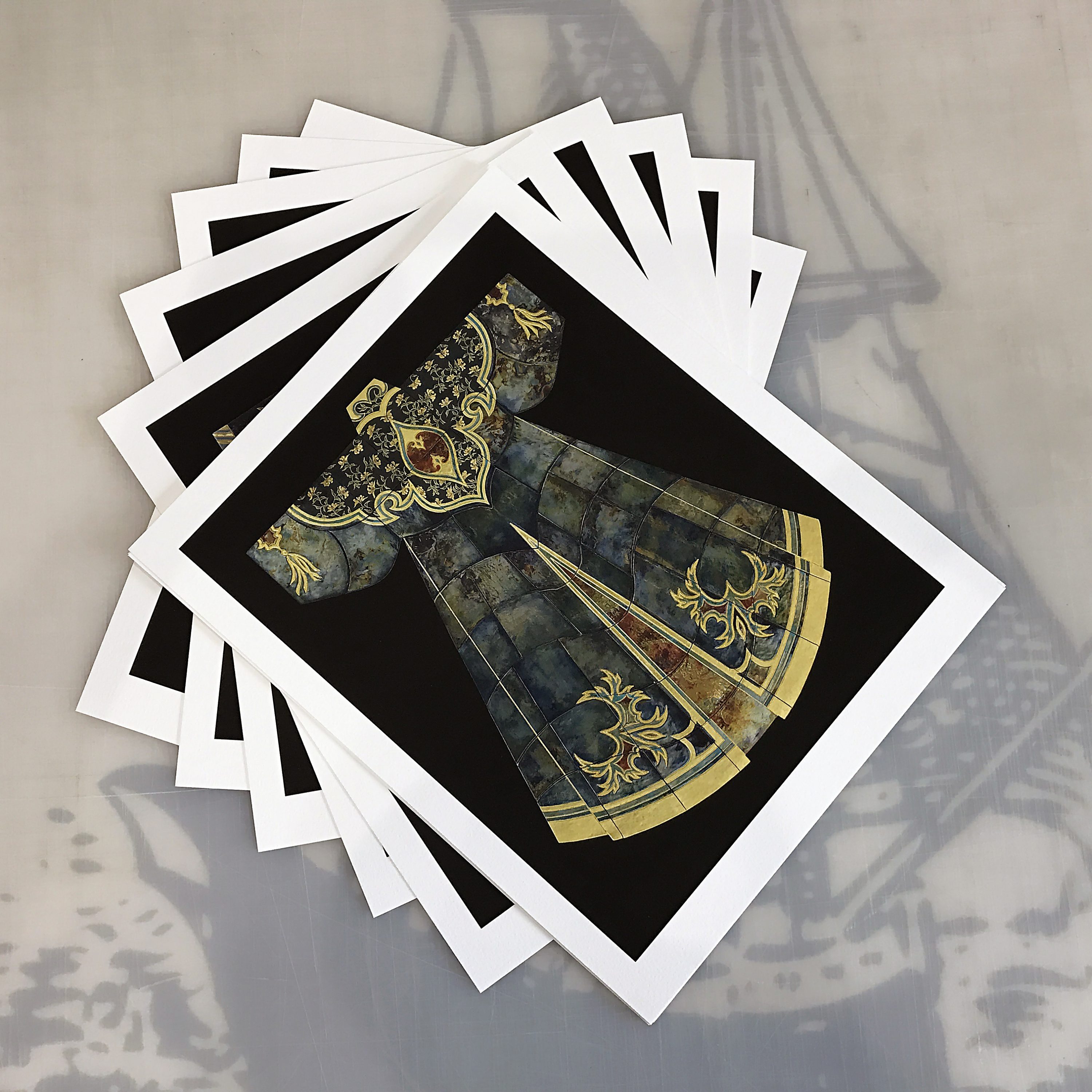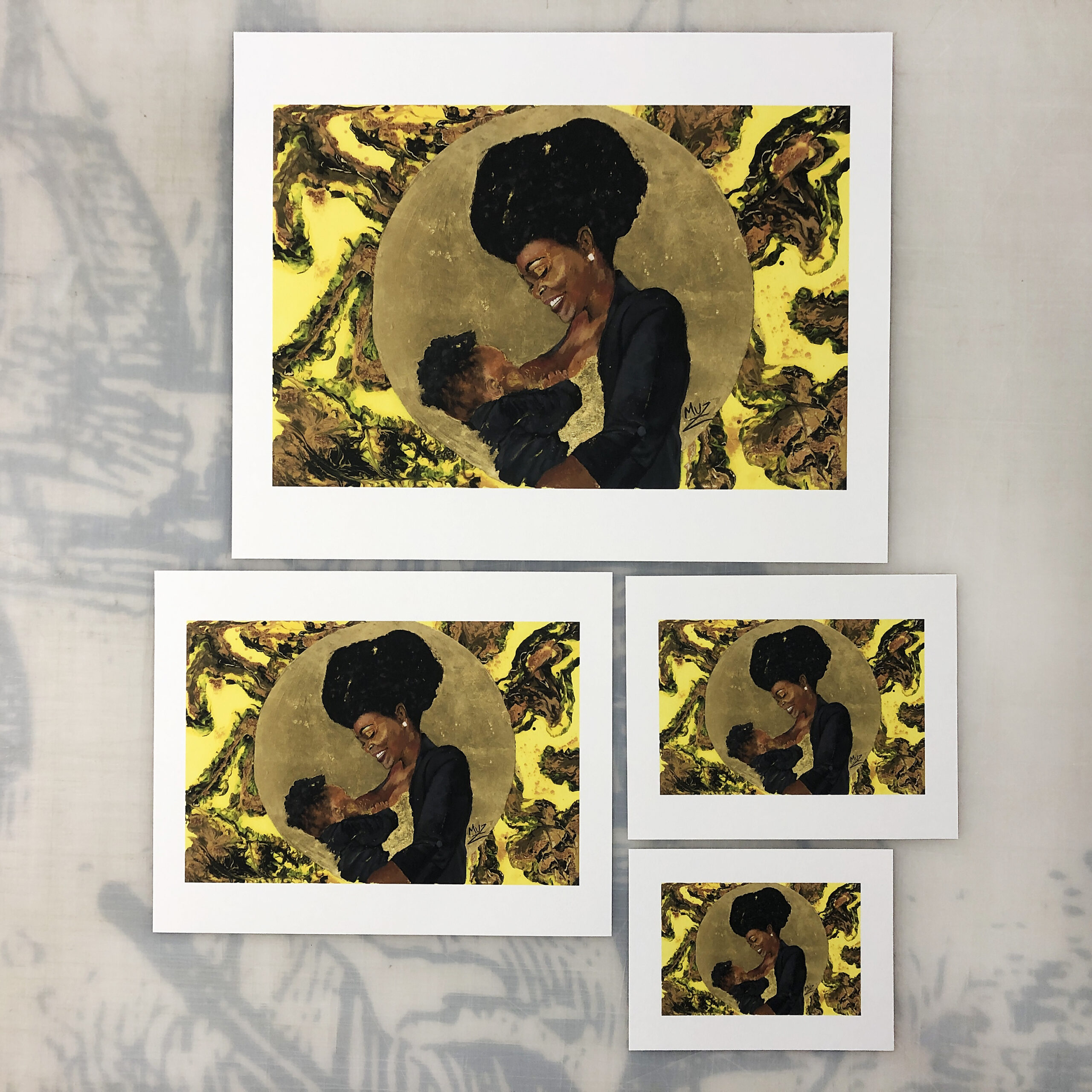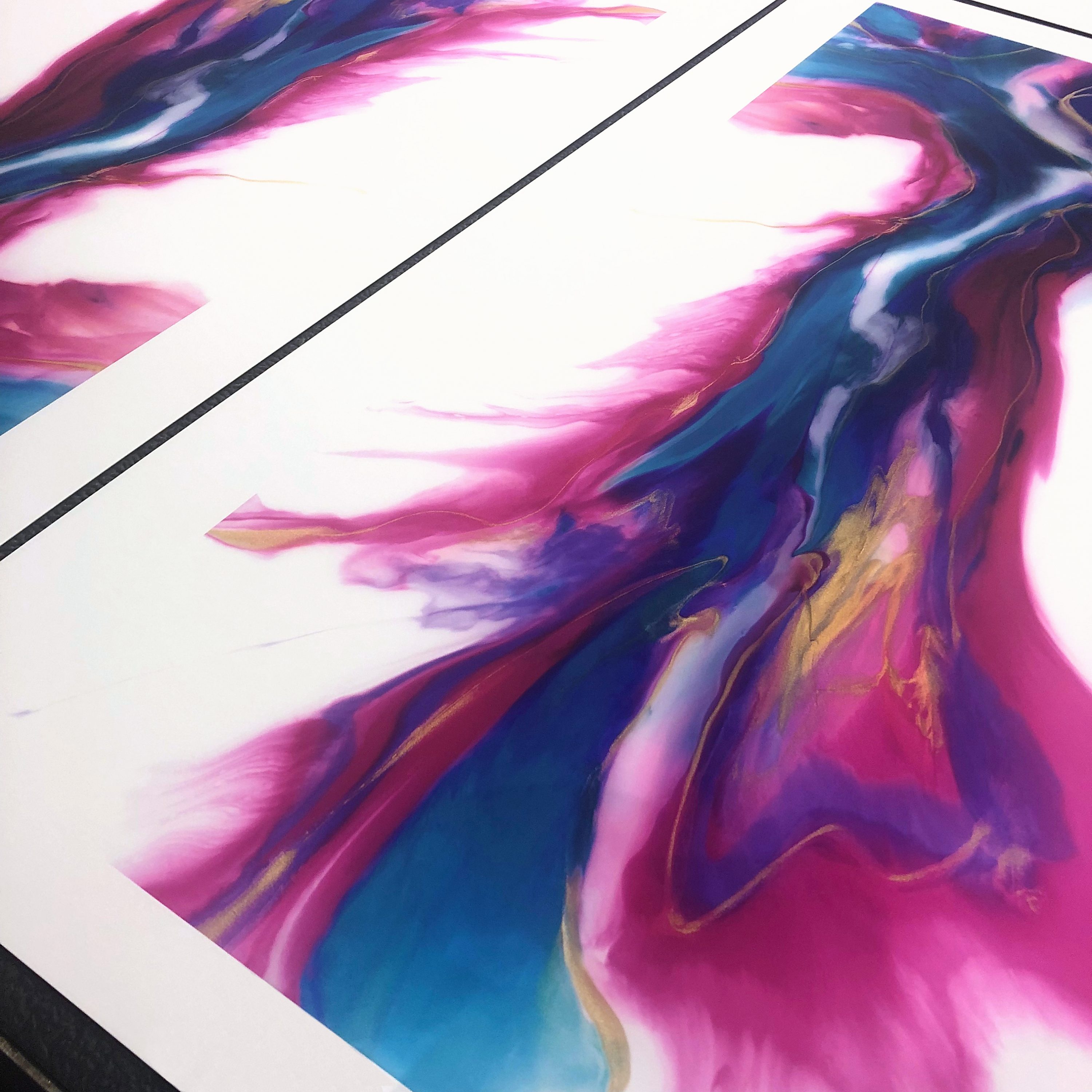Articles
Can Metallic Artwork be Reproduced for Print?
In recent years, we’ve noticed metallic paint and leaf being used more and more commonly. Metallic paints can pose challenges when photographing artwork if a photographer doesn’t have the right equipment and know-how. We’ve evolved our image capture process to ensure that we’re still generating high-quality, accurate images of artwork with metallic paint. While the inks we use aren’t metallic themselves, as metallic inks do not meet our archival standards, we are able to capture the metallic paint so accurately that the metallic effect remains clear on the digital image, as well as on final prints.
The Challenges of Photographing Metallics
Reproductions of metallic artwork by Cara Racin
Controlling Shine
Controlling the shine of metallic paint or leaf is one of the challenges when photographing artwork with metallics. As soon as you get light on the artwork, the metallic paint is going to shine and pick up much more of that light than the rest of the painting. We don’t want one area of an image to be significantly brighter, or blown out, compared to other areas, so being able to control the shine of metallics is crucial to getting a high-quality image.
Fighting Glare
Perhaps even more importantly, we need to be able to combat any glare when photographing artwork. Metallics need to be allowed to glare in order for them to read as metallics, but we don’t want to pick up any glare on other areas of the artwork. The metallics need to glare and shine, while the rest of the artwork needs to be free of the shiny white spots caused by glare.
How We Photograph Metallics
Not all photographers will have the right equipment for photographing artwork with metallic paint, and will struggle to overcome the challenges noted above. Without the right equipment and experience, their images are likely to have the metallics shining too bright and potentially blown out, as well as glare throughout the image. At Old Town Editions, our equipment is specialized for photographing artwork, and we’ve developed techniques over the years to flawlessly digitize even the trickiest metallic artworks.
Controlling Polarization
Being able to control polarization is absolutely crucial when photographing artwork at all, but especially when dealing with artwork that has metallic paint or leaf. By using polarizing filters on both of our lights, as well as our camera, we’re able to eliminate any glare from our images, making sure your artwork is captured perfectly. However, metallic paint needs to be allowed to glare in order to read as metallic. When shot with polarization filters, gold paint will appear brown, silver will appear gray, and other metallic colors will appear dark without any shine.
The solution to this problem is to take two separate images of the artwork. One image is shot fully polarized, eliminating all glare on the artwork. For the second image, we’ll adjust the polarization on our camera, allowing glare. This lets the metallics shine. Then, our technicians will merge these two images, keeping only the metallics from the unpolarized image, and preserving the glare-free image for the rest of the painting.
Print reproductions of Tim Spillane’s original artwork on copper
Polarized- metallics are dark
Unpolarized- metallics shine, darks show glare
Files merged- metallics shine, no glare on darks
Photographing artwork by Pat Stacy that features texture and metallics
Custom Lighting Setups
Being able to meticulously control lighting is also important when photographing metallic paint. We adjust our lights for every piece of artwork, ensuring that each setup reflects the needs of the artwork. When photographing artwork with metallic paint, we often have our lights set further back from the artwork to help ensure that the metallics shine evenly across the entire painting. Having the lights too close can create hot spots in the center, causing metallics in that area to shine too bright, while metallics near the edge of the painting would remain dark.
Getting the right setup for artwork with metallics can require some trial and error, adjusting the placement of the lights until we get everything perfect. At a studio like Old Town Editions, we’ll always take the time to make sure we’re getting the best possible image of your artwork, even if that means trying out a few different lighting setups until we find the perfect one.
How Does Metallic Paint Reproduce for Prints?
When making prints of artwork that features metallic paint, it’s important to remember that prints and paintings are two different mediums, and there will always be some differences in appearances. Thanks to our digital capture process, we’re able to accurately capture any metallic paint on your artworks. While your prints will absolutely reflect the metallic nature of the original artwork, they will not shine the way metallic paint does. Archival printers and inks simply cannot produce truly metallic prints.
We have many sample prints in our studio that include artwork that had metallic paint. The essence of those metallics are clearly there on the print, even if they don’t have the same shine. If you have any concerns about reproducing your metallic artwork, we’d be happy to sit down with you and show you these samples and talk through the process!
Above are examples of print reproductions of artwork that featured metallics. From left: Marcia Jestaedt, Omari Maynard, Lorna Demott
Embellishing Prints
If you want to get that truly metallic feel in your prints, you may want to consider embellishing your prints. There are a number of ways to embellish prints to create a unique product. You can add metallic paint or leaf over the top of your prints to ensure they shine the same way your original does. If you plan to try this out, make sure to test your materials first so you know how they’ll react to the inks and paper/canvas. It’s also important to note that while all of our materials are archival and acid-free, ensuring print longevity, we can’t make any promises about how your prints will fare after you’ve embellished them. Make sure to research any materials you plan to use so you understand whether or not they are archival and how they may affect your prints in the long run.

